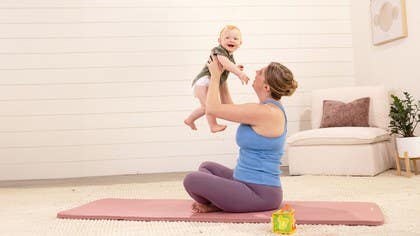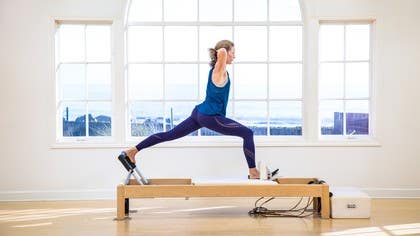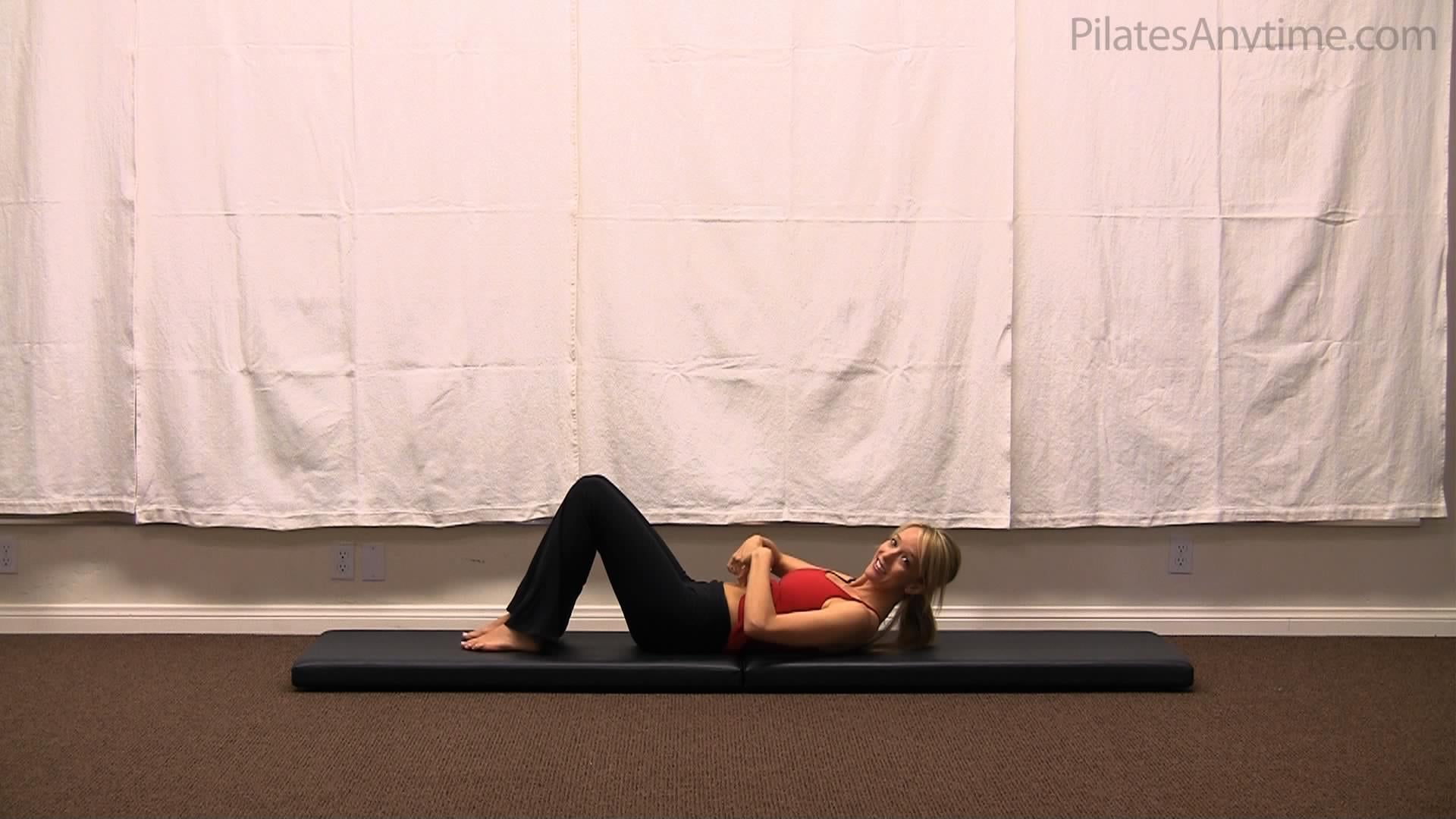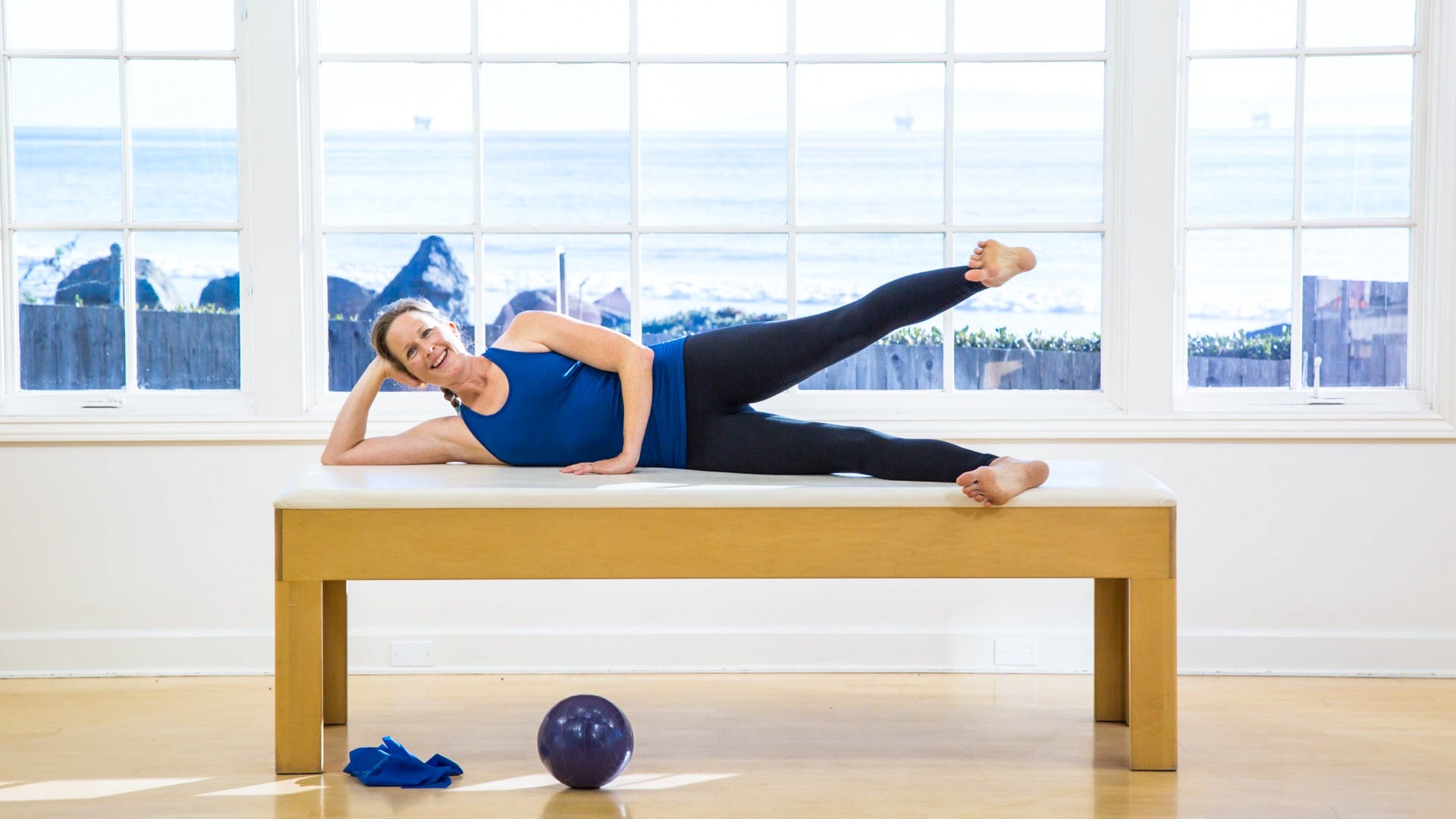
6 Things You Should Know About Diastasis Recti and How Pilates Can Help
A surprising 60 percent of postpartum moms experience diastasis recti, an abdominal separation between the two sides of the rectus abdominis muscle, but most expecting moms don’t realize their abdominals are separating until after baby arrives.
“It will happen as the baby gets bigger,” explains Los Angeles–based Carrie Macy Samper, the national Pilates training manager for Equinox, referring to when diastasis recti first appears, “but you can’t really tell because your skin is so stretched. You can’t tell [that you have it] until after your birth and you see this ‘poochy thing.’”
“There’s something called the linea alba," Samper further explains, "which is hard connective tissue that connects the six-pack. What happens with diastasis recti is that the linea alba either tears or pulls and stretches so much that it becomes very weak, and the two sides of your rectus pull apart.”
For many women, diastasis recti is a natural result of their growing bump. “It occurs because of intra-abdominal pressure from pregnancy, since you’re expanding and things are having to stretch and pull,” Samper adds. This is why women who birth twins or triplets will likely have more separation than mamas of single babies.
The degree to which your abdominals separate matters. When you have diastasis recti, “it creates less protection from the inside out of your body, which can produce a hernia,” says Samper. That’s when it’s time to get your doctor involved.
6 Things You Should Know About Diastasis Recti and Pilates
But stay calm, if you are one of the pregnant individuals who have this condition, there are precautions and actions you can take before, during, and after pregnancy to reduce your chances of developing a serious case of diastasis recti.
1. If you’re planning on getting pregnant, take a break from sit-ups.
Although there’s a genetic component to whether you might develop diastasis recti, the likelihood of separation also depends on the condition of your abdominals before you get pregnant. “If you’ve done a lot of sit-ups and have a toned rectus, it’s tighter and those tissues are already being pulled,” Samper says, “and when you start to add pressure [from the pregnancy] they can tear more easily.” So, doing crunch after crunch after crunch, even before you conceive, can actually work against you.
2. The right prenatal exercise (ahem, Pilates) can be preventative.
Feel free to stick to your usual routine during your trimester (as long as you’re up for it, with all the nausea and fatigue you might be experiencing!), but make adjustments as your belly expands. “By three months, when you start showing, stop doing forward flexion and holding planks for a long time because there’s nothing to be gained by working your rectus abdominis,” Samper explains. “Your abdominals are trying to relax and expand to make room for the baby, but [by working the rectus] you’re tightening it.”
Instead, Samper recommends: “You want to be working your transverse abdominis to provide support around your abdomen and to help push the baby out.”
A strong transverse abdominis, your deepest layer of abdominals that forms a “corset” around your torso, gives your torso and back more support not only in Pilates, but during other activities. “The conditioning of Pilates gives you that awareness, and helps you understand what’s good and bad for your body when you do other forms of fitness.”
Other great prenatal exercises Samper recommends include anything lateral like Side Planks.
3. Relax! Everyday movements aren’t likely to cause an abdominal separation.
It’s time to breathe a collective sigh of relief. “There’s not a lot you can do to prevent diastasis recti while you’re pregnant aside from doing those exercises that would antagonise it,” Samper says. In short, your everyday activities shouldn’t cause any strain.
There is one (small) exception: “Twisting and picking something up would put pressure on the abdominals, because the tissues are stretching and then pressure is being applied.” So just be careful—and make your significant other or friend do the heavy lifting.
4. Have your abdominals checked before you do any postpartum exercise.
“Mostly women don’t really know they have diastasis recti until someone tells them,” Samper points out. She recommends seeking out an expert, like a Pilates instructor trained in postnatal exercise, to palpate the abdominal area.
What will it feel and look like? “Usually you feel ‘gushiness’ in the middle, that it’s not tight around the center, and that things are moving around,” Samper says. “When [the client] does ab work, it feels disconnected, and there will be a visual ‘tent’ or protrusion as opposed to flat tissue. If you’re doing ab work and the area is protruding, that’s likely a hernia and it’s your internal organs and intestines pushing out. If you keep doing [these movements], it can cause back pain and instability in your pelvis.”
The good news is that the “test” is simple and gentle. “The person is lying down and relaxed,” Samper relays, “and the tester puts his or her fingers in the abdomen right above the belly button. However deep [the tester’s] fingers can sink in, and if they feel some sort of trough, that indicates separation. If you don’t have separation, you’d feel a smoother tissue.”
Samper says that even if you have diastasis recti, it can be “safe and fine. It’s not [usually] something terrible that you have to fix.”
That said, if the space is more than the width of your fingers, it needs to be evaluated by a doctor to determine if surgery is needed. “Any more than one finger is a problem or something you want to address,” Samper adds.
5. Pilates can be highly supportive for the postpartum woman.
When you practice Pilates, you focus on activating the transverse abdominis, which can play an important role in healing your diastasis. “Pilates brings awareness to your transverse abdominis, you teach your body to close the gap on your own, as opposed to having to undergo surgery,” Samper says.
Wondering what Pilates exercises are best for the postpartum client? “I think the main idea is that you can do any Pilates exercise,” Samper says, “you just need to make sure the person understands how to engage the transverse abdominis, how to ‘corset’ the midsection. For example, Pulling Straps while seated on the Long Box is great, but you have to make sure the client is sitting tall, ‘corset-ing’ around the waist, engaging glutes, etc.”
Samper's other favorite postpartum exercises include Arm Springs, Side-Bending, Rowing on the Reformer, anything standing where the torso is vertical like Chest Expansion, Kneeling Mermaid, Shoulder Roll-Down on the Cadillac, Footwork on the Reformer or Wunda Chair, all of the High Chair exercises, Side-Kick, and Mini Swan.
6. Avoid forward flexion pre and post baby.
If you have diastasis, “you don’t want to do forward flexion in Pilates until you close the gap,” Samper advises. “If you’re only using the rectus abdominis [aka those six-pack muscles] during The Hundred or Series of Five, you’re making it worse.”
Other exercises to avoid: “Mostly any movement that will cause extra intra-abdominal pressure like holding planks, push-ups, sit-ups,” she explains. “[Exercise like] running, jump rope or cardio class may cause other symptoms to arise. But once you get that transverse abdominis strong enough, you can do them because it’s supporting the movement.”
Also avoid heavy weight lifting during this time, especially while squatting or doing deadlifts.
In summary, if during your pregnancy, you’re noticing any ridges, a gap between your abdominals, or any “tenting,” especially during exercise, take a little precaution, visit a doctor, and locate a prenatal Pilates specialist. It’s likely that you will be able to continue your Pilates practice without aggravating the condition. As an added bonus, your Pilates practice will help you stay fit and healthy during pregnacy, get ready for delivery, and recover when baby arrives.
Comments
You need to be a subscriber to post a comment.
Please Log In or Create an Account to start your free trial.




















